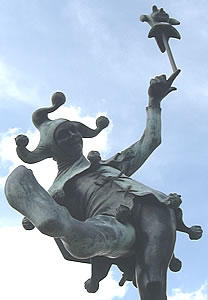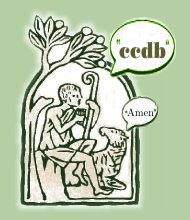Moloch-Adoring ESCR Devotees in Disarray
Dr. Hwang's evident absence of integrity has tarnished South Korea's ESCR once more.
TIME.com has the story here.
Hwang maintains that he did create the groundbreaking stem cell lines from patients, and that he even provided them at the time to six researchers who can vouch for their authenticity. "What I can say for sure is that we did create patient-specific stem cells and we have source technologies to repeat them from scratch," he said, referring to the stem cells he cultured for the first time from 11 patients with diseases.Is it the lure of government subsidies? Is it the esteem that comes from being the first to make an ESCR breakthrough? Hard to take the latter seriously: He's already established his bona fides by cloning a dog. Either way, the darkening cloud of questions and doubt surrounding Dr. Hwang's work may seriously damage ESCR from South Korea--and possibly beyond--for some time.
But Hwang did not specifically address the most serious charge which aired on the Korean network MBC-TV on Thursday night. In an interview, one of his junior researchers claimed that Hwang had asked him to turn two or three stem cell lines into 11 by photographing them repeatedly for submission to Science.
Instead, Hwang acknowledged that the images published in Science were problematic, but provided his own explanation: that the stem cells were somehow mismanaged or possibly switched. In January, his team at Seoul National University had created six patient-specific stem cell lines, but they became contaminated. They reported the breach to the government and rescued two batches which they stored temporarily at their partner lab in Mizmedi Hospital. After Hwang's lab was cleaned and new sterilization procedures put into place, the stem cell lines came back to Hwang's lab. His team then went on to create six more lines in another cycle attempt, and then three additional lines in a subsequent cycle. Hwang's practice was to grow the delicate cells in their initial stages in his lab, then move them to Mizmedi for storage and further maturation.
When producers of an investigative television program from MBC-TV raised questions about the validity of the stem cells following the egg-donor scandal, Hwang provided MBC-TV with samples from five stem cell lines, and cells from their donors, in an effort to prove their authenticity. It's not clear where these stem cells were stored. Hwang said he and his colleagues performed their own in-house test, including DNA fingerprinting to verify the source of the stem cells. It was then that he discovered that the fingerprints did not match those printed in Science. "We learned that the stem cells were actually made in Mizmedi," he said, and therefore were not, in fact, the stem cells Hwang had created from the patients.
Private sector money flows to ASCR. After all, at least 84 proven medical treatments originated from that kind of research. As far as I know, there aren't any prominent ASCR proponents or researchers with Dr. Hwang's ethical problems. Perhaps government subsidies should follow the private money. While it does nothing to promote the Absolute Individualist Agenda, it may prove to be a valuable expenditure of taxpayers' hard-earned income. Isn't it worth a shot?





















<< Home